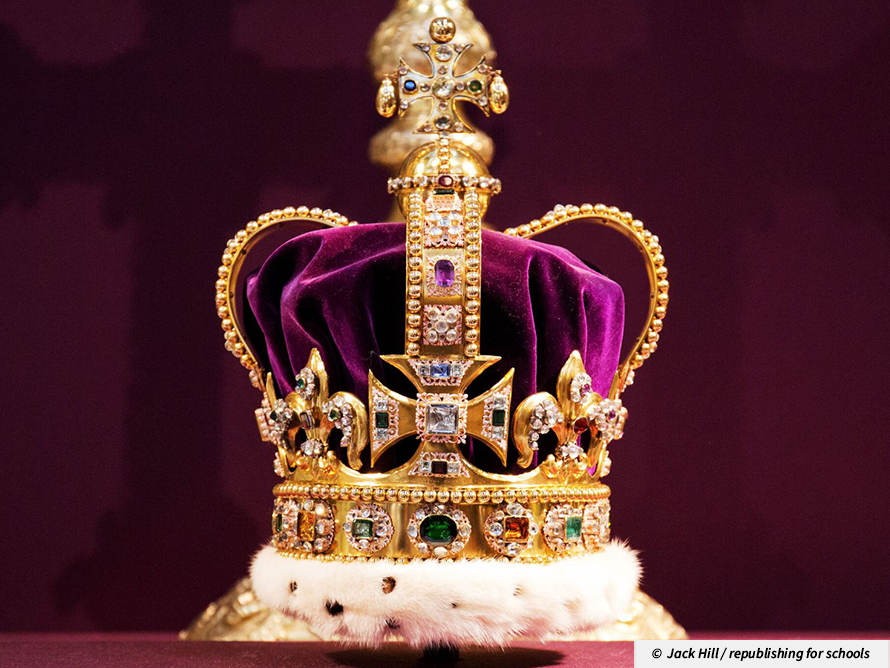Is tradition overrated? The coronation of King Charles III on 6 May will contain elements dating back over 1,000 years — but it will also feature some significant changes.
A spoon, a crown, a sceptre, an orb, a king
 Heavy duty: Dating from 1661, St Edward's Crown is made of solid gold and precious stones.
Heavy duty: Dating from 1661, St Edward's Crown is made of solid gold and precious stones. Glossary
Regalia - The distinctive clothes people with high status use at formal occasions - particularly royals.
Orb - A spherical object.
Sceptre - A decorated stick carried by a monarch or other figure of authority.
Archbishop of Canterbury - Although the head of the Church of England is the Queen, the Archbishop is the most senior bishop and symbolic head of the worldwide Anglican communion.
Westminster Abbey - A large church in London. Many British kings and queens are buried there.
Holy Communion - In Christianity, an important ritual symbolic of Jesus' last supper of bread and wine.
Church of England - The main or official church in England, also known as the Anglican Church. The supreme head of the church is the monarch.
Imperial - Relating to an empire.
House of Lords - In the UK, the upper chamber of the UK Parliament. It is made up of hereditary peers, the Lords Spiritual (bishops) and life peers.
